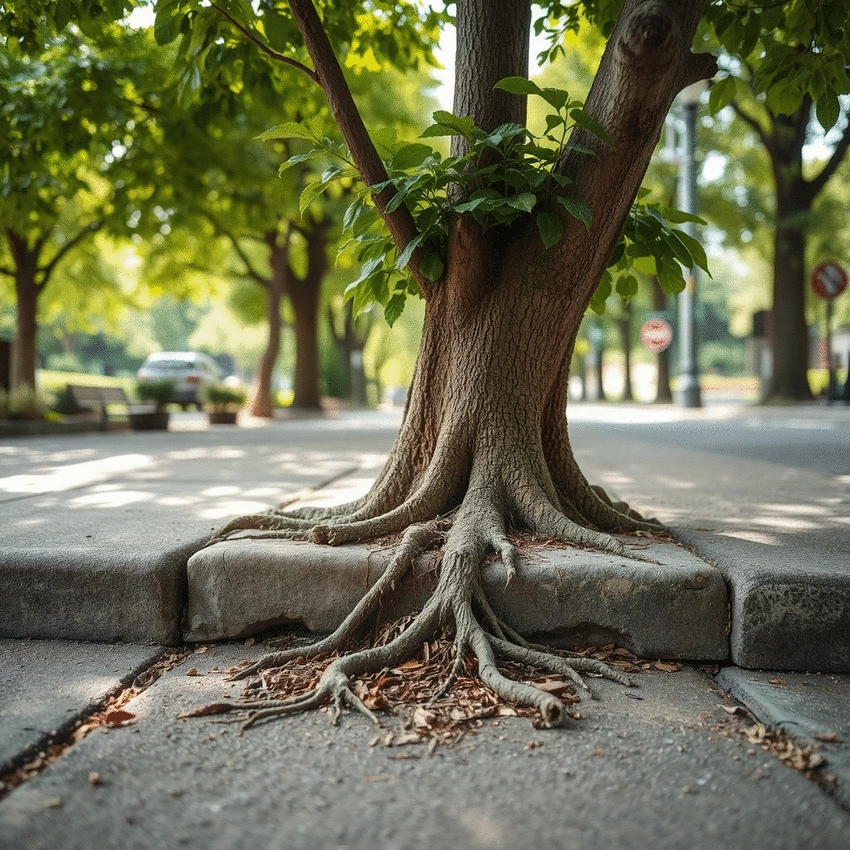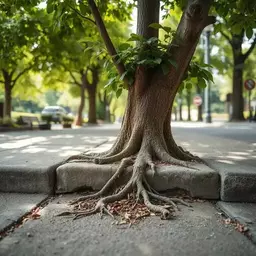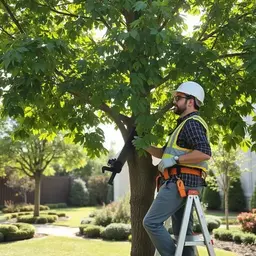Managing Tree Roots by Sidewalks
By Elena Whitmore / Oct 21
As urban environments continue to evolve, the relationship between trees and sidewalks becomes increasingly critical. Understanding the dynamics of tree roots and their impact on walking surfaces not only prevents accidents but also ensures the longevity of our green spaces. What if we could strike the perfect balance between nature and infrastructure? Here’s what you’ll learn about managing this important coexistence.
Understanding the challenges posed by tree roots on sidewalks is crucial for urban planning and safety. Below is an overview of common issues and effective strategies for managing tree roots. For more in-depth information, consider exploring resources on tree care around hardscapes.
Welcome to the fascinating world of trees and sidewalks, where beauty and utility often find themselves at odds! As an arborist and landscape designer, I’ve seen firsthand how the roots of trees can create challenges for urban environments. Let’s dive into the common issues that arise when tree roots and sidewalks intersect, and why understanding this conflict is vital for maintaining both tree health and pedestrian safety.
One of the most noticeable problems caused by tree roots is the cracking and lifting of sidewalks. This occurs when roots grow beneath the concrete, pushing it upward or cracking it apart. Not only does this pose safety hazards for pedestrians, but it can also disrupt the flow of urban spaces. So, what are the causes and effects of these sidewalk issues? Here’s a closer look:
The consequences of cracked and lifted sidewalks are far-reaching. Not only are injuries likely to occur from tripping, but these cracks can also lead to further deterioration of the sidewalk. Regular maintenance and timely repairs can help mitigate these issues and preserve the integrity of our walkways.
Additionally, damaged sidewalks can make it challenging for people with mobility devices or strollers to navigate. As a passionate advocate for creating accessible outdoor environments through Rooted Edge, I believe that ensuring safe pathways is essential for community well-being. This aligns with principles of designing landscapes with trees to prioritize both aesthetics and functionality.
Root intrusion is another issue that may not be immediately visible. It often occurs when roots encroach into underground utilities or other spaces, causing unexpected damage. This can lead to costly repairs and complications for homeowners and municipalities alike.
To prevent these issues, regularly monitoring tree root behavior is crucial. Noticing signs early on can save time and resources in the long run. Awareness is key, and as we explore solutions, remember that a proactive approach to tree care can greatly enhance the health of both trees and sidewalks.
Maintaining the health of both trees and sidewalks is vital for creating harmonious urban spaces. When sidewalks are damaged, the aesthetic appeal of the area diminishes, and the potential for accidents increases. Plus, trees play a significant role in improving air quality and providing shade, enhancing the overall atmosphere of our communities.
When sidewalks are in disrepair, it affects more than just foot traffic. Here are some important considerations:
The stability of trees can also be compromised by sidewalk-related root damage. When roots are disturbed or damaged, they may not anchor the tree securely, risking potential falls or breakage. This can lead to significant safety concerns for individuals nearby.
As someone who champions the integration of arboriculture with landscape design at Rooted Edge, I understand the importance of nurturing tree roots to maintain not only their health but also the safety of surrounding environments.
Soil compaction plays a crucial role in how well tree roots can grow and access the nutrients they need. Compacted soil restricts root expansion and can lead to stress on trees. This, in turn, affects their ability to thrive and contribute to the ecosystem.
To combat soil compaction, we can utilize various strategies, such as ensuring proper planting techniques and maintaining adequate moisture levels. By taking these steps, we promote healthy trees that coexist beautifully with our urban infrastructure.
Did you know? Regularly monitoring tree health can prevent costly damage to sidewalks. Look for signs of stress in trees, such as wilting leaves or unusual growth patterns, which may indicate root issues that could affect nearby walkways. Early intervention not only preserves the beauty of your landscape but also enhances pedestrian safety!
As we dive into the heart of our discussion, it’s essential to recap the most effective strategies for managing tree roots to protect both sidewalks and trees. It’s all about finding that sweet spot between healthy trees and well-maintained walkways. By implementing the right practices, we can truly enhance urban environments and create spaces that everyone can enjoy.
Some of the standout strategies include:
In reflecting on these strategies, we see how crucial proper planning and maintenance are. At Rooted Edge, we believe that understanding the relationship between trees and sidewalks is key to fostering urban beauty and functionality. Working together, we can advocate for sustainable practices that benefit everyone.
Here are some important points to keep in mind:
So, what’s next? If you’re a homeowner or a local government representative, there are actionable steps you can take to ensure healthy coexistence between trees and sidewalks. Consulting with professionals can pave the way for sustainable practices that protect our natural resources.
Consider these next steps:
Knowledge is power! The more we understand the dynamics of tree care and sidewalk management, the better prepared we are to tackle potential issues. At Rooted Edge, we are passionate about sharing resources that foster learning and growth within our community.
For those eager to deepen their understanding, I recommend exploring further resources on urban tree care and sidewalk management. Here’s a quick list of reading materials and resources:
Lastly, I invite you to engage in ongoing discussions. Your experiences and questions are invaluable! Sharing insights can lead to better practices and solutions for managing tree roots and sidewalks.
Let’s keep the conversation going—feel free to reach out and share your thoughts or ask questions. Together, we can cultivate a community that thrives harmoniously alongside nature!
Here is a quick recap of the important points discussed in the article:

 Managing Tree Roots by Sidewalks
As urban environments continue to evolve, the relationship between trees and sidewalks becomes incre
Managing Tree Roots by Sidewalks
As urban environments continue to evolve, the relationship between trees and sidewalks becomes incre
 Designing Landscapes with Trees
The right trees can transform an ordinary yard into an extraordinary retreat. Have you ever thought
Designing Landscapes with Trees
The right trees can transform an ordinary yard into an extraordinary retreat. Have you ever thought
 Tree Maintenance Services
Did you know that a well-maintained tree can increase your property’s value by up to 15%? Unde
Tree Maintenance Services
Did you know that a well-maintained tree can increase your property’s value by up to 15%? Unde